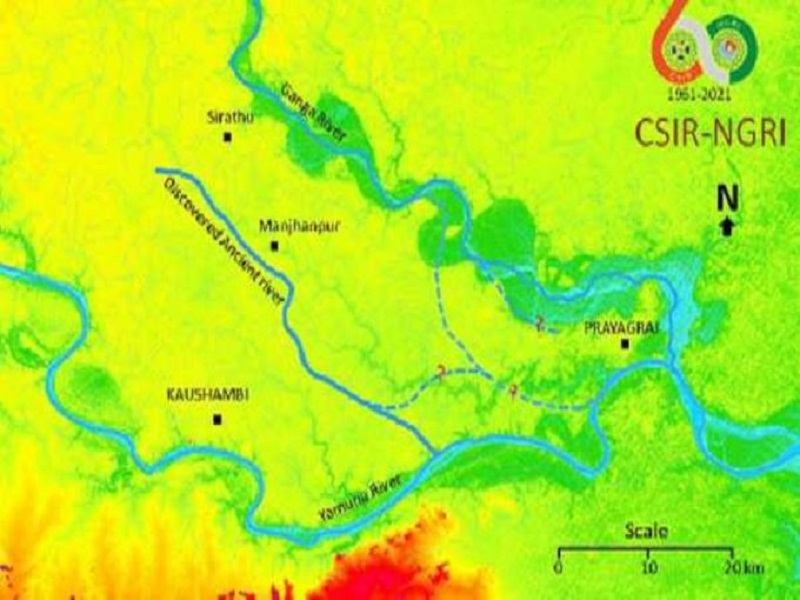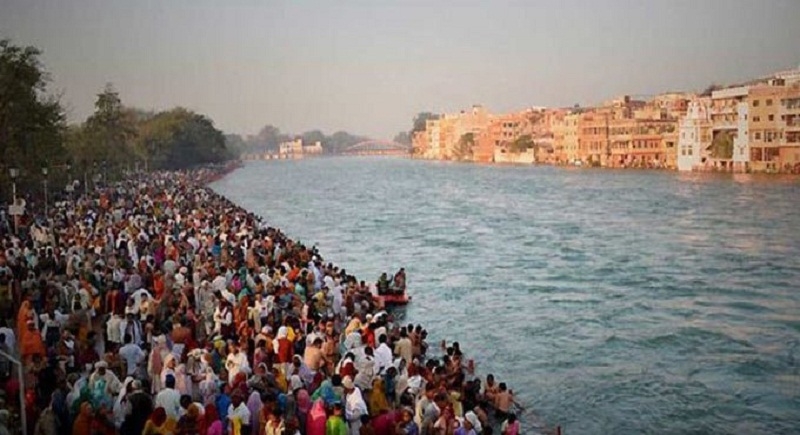Researchers locate lost stream of Saraswati River

Hyderabad, Dec. 14: A team of researchers from the National geophysical Research institute of India (NGRI) located the lost stream of River Saraswati, it was reported.
According to reports in Telangana Post and TFI Post the team from the Hyderabad-based NGRI located the 45-km-long underground ancient Vedic River in the Ganga-Yamuna Doab, usually described as a tract of land between the confluence of the two rivers.
The study, titled ‘Airborne Electromagnetic Signatures of Ancient River in the Water-Stressed Ganga Plain, Prayagraj, India: A Potential Groundwater Repository’, was conceptualized and led by NGRI Director Dr Virendra M Tiwari and published in the form of a research paper in American Geophysical Union (AGU) on December 1.
Dr Tiwari said, “Given the depth at which the river was discovered and primary analysis after out drilling process, it seems that the river is likely to be 10 to 12,000 years old. However, only further studies will ascertain its actual age.”
He further said that the age of the discovered ancient river is in line with the Hindu religious texts and the mention of the River Saraswati in Rig Veda, the Mahabharata, and other Hindu scriptures.
“An airborne electromagnetic study in the Ganga-Yamuna Doab, supplemented with drilling and logging data to address the groundwater crisis, has unraveled exhaustive aquifer information with a discovery of 45-km-long buried river, having dimensions comparable to those of Ganga and Yamuna,” the researchers said in the paper.
The location of this major ancient river that falls within the region where the lost stream of River Saraswati was flowing in the past, adds a new physical dimension to the mythological river, they said.
The study, therefore, confirms that Triveni Sangama existed, and River Saraswati was never mythical, to begin with. Further research on the Saraswati River will reveal its entire route through the states of Haryana and Rajasthan. Research on this subject had already started in the year 2018, which should add up to the latest discovery in Prayagraj.

The ancient river is likely to be extending towards the Himalayas, the study which was originally taken up to explore an effective water management plan for sustained water availability following the rapid depletion and deterioration of groundwater in the Ganga River Basin, said.
The underlying aquifer might also hold a great promise for management of current declining groundwater resources in the Ganga-Jamuna region, researchers said.
The NGRI researchers said that 3D structural mapping of relict signatures of the past imprint, specially meandering channels buried under soil cover in the current landscape and its linkages with other hydro-geological features that influence the hydrodynamic process, are very important and relevant in this day and age.
Such techniques, when compared to the traditional and more expensive methods like sediment coring, are vital to address the fast depleting and deteriorating groundwater resources in the country, the researchers added.